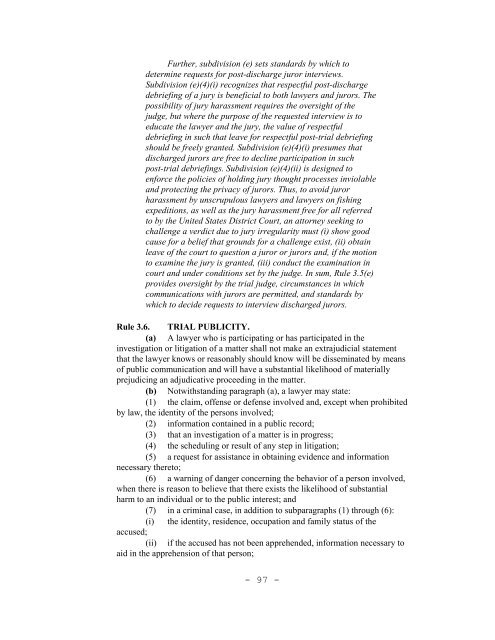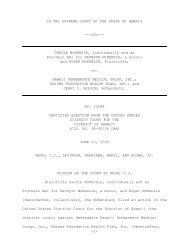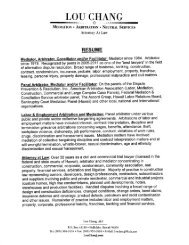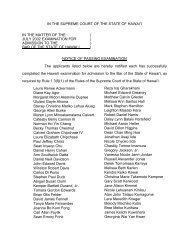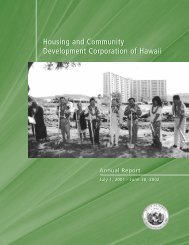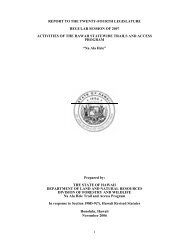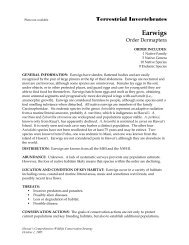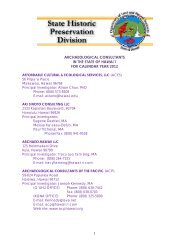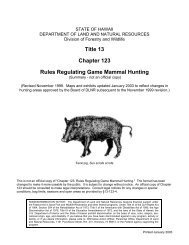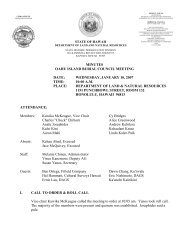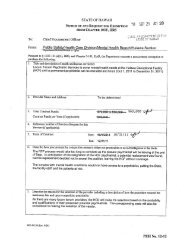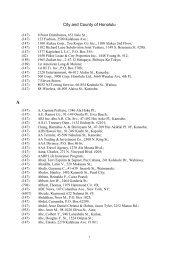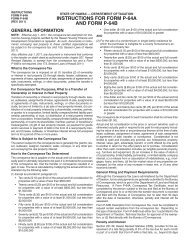amendments to the Hawaii Rules of Professional Conduct
amendments to the Hawaii Rules of Professional Conduct
amendments to the Hawaii Rules of Professional Conduct
Create successful ePaper yourself
Turn your PDF publications into a flip-book with our unique Google optimized e-Paper software.
Fur<strong>the</strong>r, subdivision (e) sets standards by which <strong>to</strong><br />
determine requests for post-discharge juror interviews.<br />
Subdivision (e)(4)(i) recognizes that respectful post-discharge<br />
debriefing <strong>of</strong> a jury is beneficial <strong>to</strong> both lawyers and jurors. The<br />
possibility <strong>of</strong> jury harassment requires <strong>the</strong> oversight <strong>of</strong> <strong>the</strong><br />
judge, but where <strong>the</strong> purpose <strong>of</strong> <strong>the</strong> requested interview is <strong>to</strong><br />
educate <strong>the</strong> lawyer and <strong>the</strong> jury, <strong>the</strong> value <strong>of</strong> respectful<br />
debriefing in such that leave for respectful post-trial debriefing<br />
should be freely granted. Subdivision (e)(4)(i) presumes that<br />
discharged jurors are free <strong>to</strong> decline participation in such<br />
post-trial debriefings. Subdivision (e)(4)(ii) is designed <strong>to</strong><br />
enforce <strong>the</strong> policies <strong>of</strong> holding jury thought processes inviolable<br />
and protecting <strong>the</strong> privacy <strong>of</strong> jurors. Thus, <strong>to</strong> avoid juror<br />
harassment by unscrupulous lawyers and lawyers on fishing<br />
expeditions, as well as <strong>the</strong> jury harassment free for all referred<br />
<strong>to</strong> by <strong>the</strong> United States District Court, an at<strong>to</strong>rney seeking <strong>to</strong><br />
challenge a verdict due <strong>to</strong> jury irregularity must (i) show good<br />
cause for a belief that grounds for a challenge exist, (ii) obtain<br />
leave <strong>of</strong> <strong>the</strong> court <strong>to</strong> question a juror or jurors and, if <strong>the</strong> motion<br />
<strong>to</strong> examine <strong>the</strong> jury is granted, (iii) conduct <strong>the</strong> examination in<br />
court and under conditions set by <strong>the</strong> judge. In sum, Rule 3.5(e)<br />
provides oversight by <strong>the</strong> trial judge, circumstances in which<br />
communications with jurors are permitted, and standards by<br />
which <strong>to</strong> decide requests <strong>to</strong> interview discharged jurors.<br />
Rule 3.6. TRIAL PUBLICITY.<br />
(a) A lawyer who is participating or has participated in <strong>the</strong><br />
investigation or litigation <strong>of</strong> a matter shall not make an extrajudicial statement<br />
that <strong>the</strong> lawyer knows or reasonably should know will be disseminated by means<br />
<strong>of</strong> public communication and will have a substantial likelihood <strong>of</strong> materially<br />
prejudicing an adjudicative proceeding in <strong>the</strong> matter.<br />
(b) Notwithstanding paragraph (a), a lawyer may state:<br />
(1) <strong>the</strong> claim, <strong>of</strong>fense or defense involved and, except when prohibited<br />
by law, <strong>the</strong> identity <strong>of</strong> <strong>the</strong> persons involved;<br />
(2) information contained in a public record;<br />
(3) that an investigation <strong>of</strong> a matter is in progress;<br />
(4) <strong>the</strong> scheduling or result <strong>of</strong> any step in litigation;<br />
(5) a request for assistance in obtaining evidence and information<br />
necessary <strong>the</strong>re<strong>to</strong>;<br />
(6) a warning <strong>of</strong> danger concerning <strong>the</strong> behavior <strong>of</strong> a person involved,<br />
when <strong>the</strong>re is reason <strong>to</strong> believe that <strong>the</strong>re exists <strong>the</strong> likelihood <strong>of</strong> substantial<br />
harm <strong>to</strong> an individual or <strong>to</strong> <strong>the</strong> public interest; and<br />
(7) in a criminal case, in addition <strong>to</strong> subparagraphs (1) through (6):<br />
(i) <strong>the</strong> identity, residence, occupation and family status <strong>of</strong> <strong>the</strong><br />
accused;<br />
(ii) if <strong>the</strong> accused has not been apprehended, information necessary <strong>to</strong><br />
aid in <strong>the</strong> apprehension <strong>of</strong> that person;<br />
- 97


